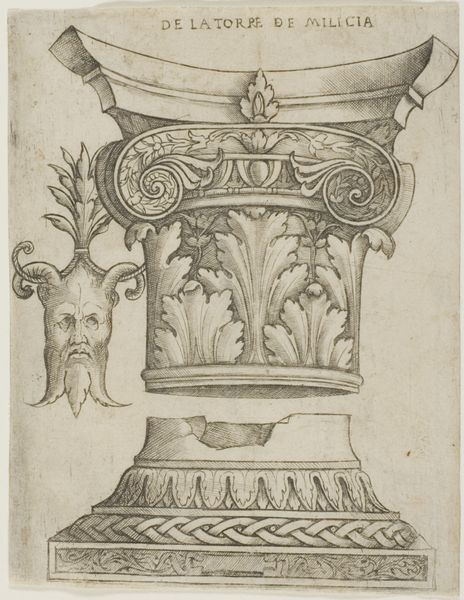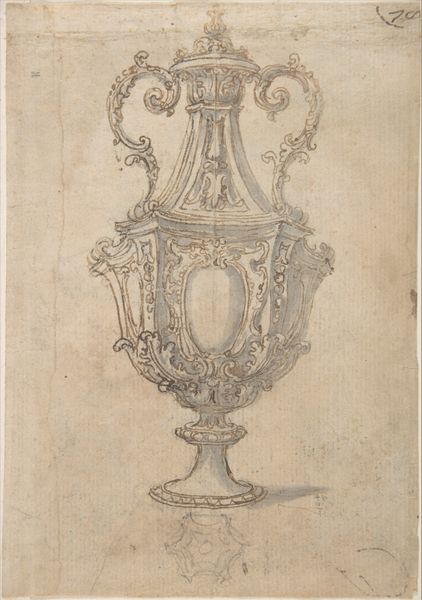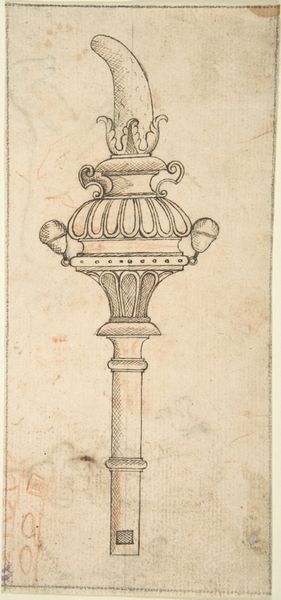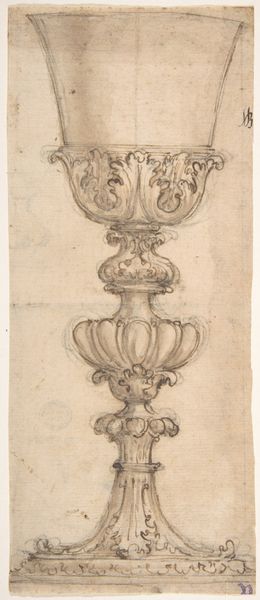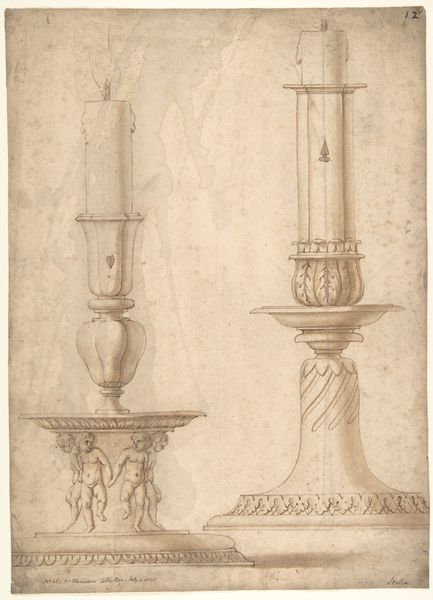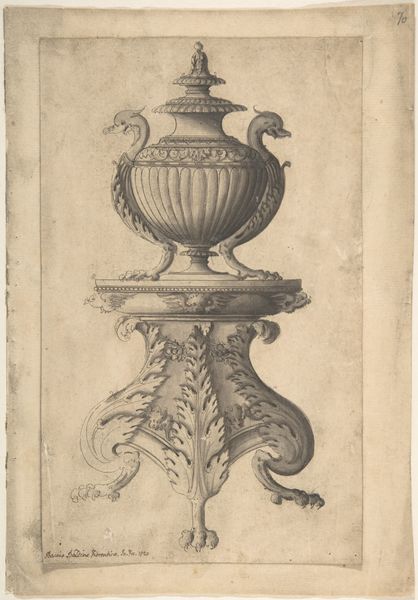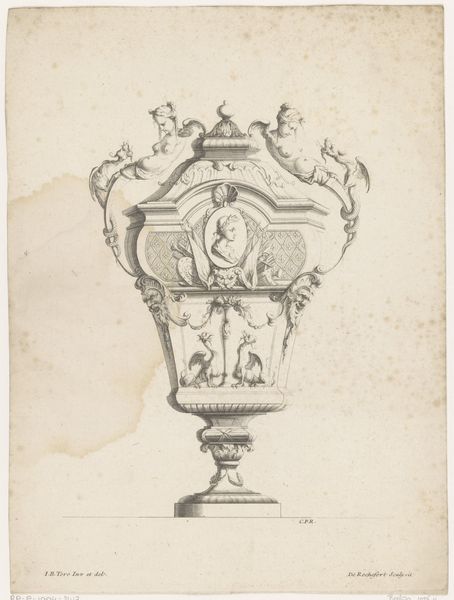
Sheet with sketches and designs for two vases, three classical heads en profil and two slave figures (recto); Design for a Vase and a Nude Male Figure (verso) 1652 - 1725
0:00
0:00
drawing, pencil
#
drawing
#
head
#
etching
#
figuration
#
form
#
11_renaissance
#
pencil
#
nude
#
male-nude
#
profile
Dimensions: sheet: 8 1/8 x 5 11/16 in. (20.6 x 14.4 cm)
Copyright: Public Domain
Editor: Here we have Giovanni Battista Foggini's "Sheet with sketches and designs for two vases, three classical heads en profil and two slave figures," dating from around 1652 to 1725, rendered in pencil. I’m really struck by the juxtaposition of the powerful classical heads and the delicate vase designs. What historical context informs the presence of both these elements on a single sheet? Curator: Well, remember the cultural climate of Foggini's time. The Renaissance's revival of classical ideals was still a potent force, influencing artistic production and patronage. Consider the role of the Accademia in shaping artistic training, instilling classical principles while simultaneously fulfilling demands of aristocratic taste. Are these "slave figures," as the title suggests, or are they renderings of captured individuals as trophies, serving a purpose to celebrate triumph? Editor: That’s a really interesting point about the depiction of enslavement as something celebratory. I hadn't thought about it that way. Does the presence of classical heads indicate that the vases themselves are intended to evoke those periods? Curator: Exactly! Look at the vase's form and the heads adorning them. How do they reflect the artistic aspirations of the time, seeking to emulate and even surpass classical achievements? Who were his patrons, and what kind of political statements were these opulent items expected to express? The classical heads reference the powerful figures of that bygone era, lending gravitas to the objects they are incorporated into. Editor: So it’s not just about aesthetics, but also about communicating a specific kind of power and lineage. It’s really amazing how even a preliminary sketch can reveal so much about social dynamics. Curator: Precisely! By questioning the function and perception of imagery, we uncover how socio-political currents inform not only the subject, but the artist's decisions. These designs showcase a complex intersection of aesthetics and power. Editor: I've definitely gained a new perspective on how to look at the intent behind seemingly decorative designs. Thanks!
Comments
No comments
Be the first to comment and join the conversation on the ultimate creative platform.


